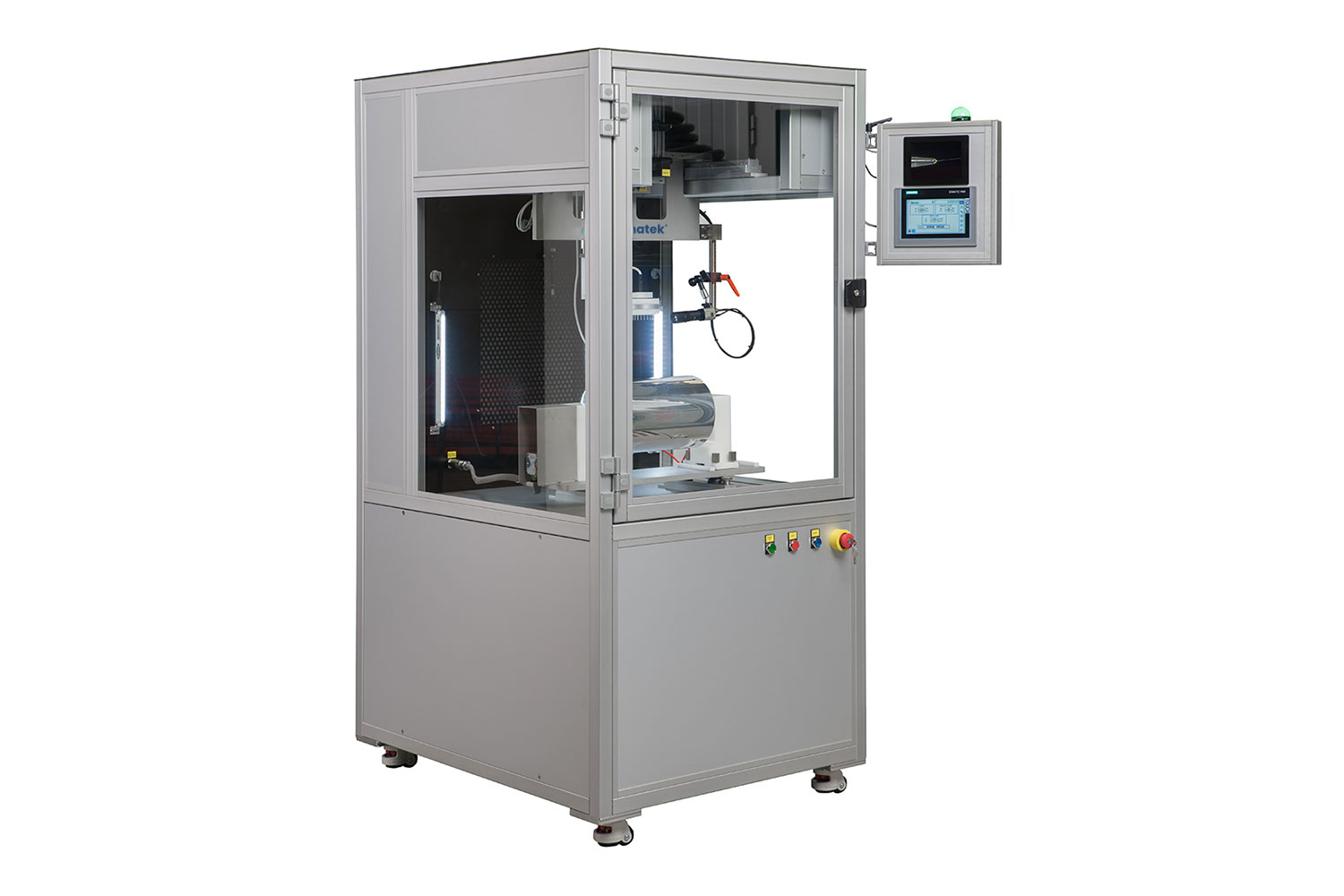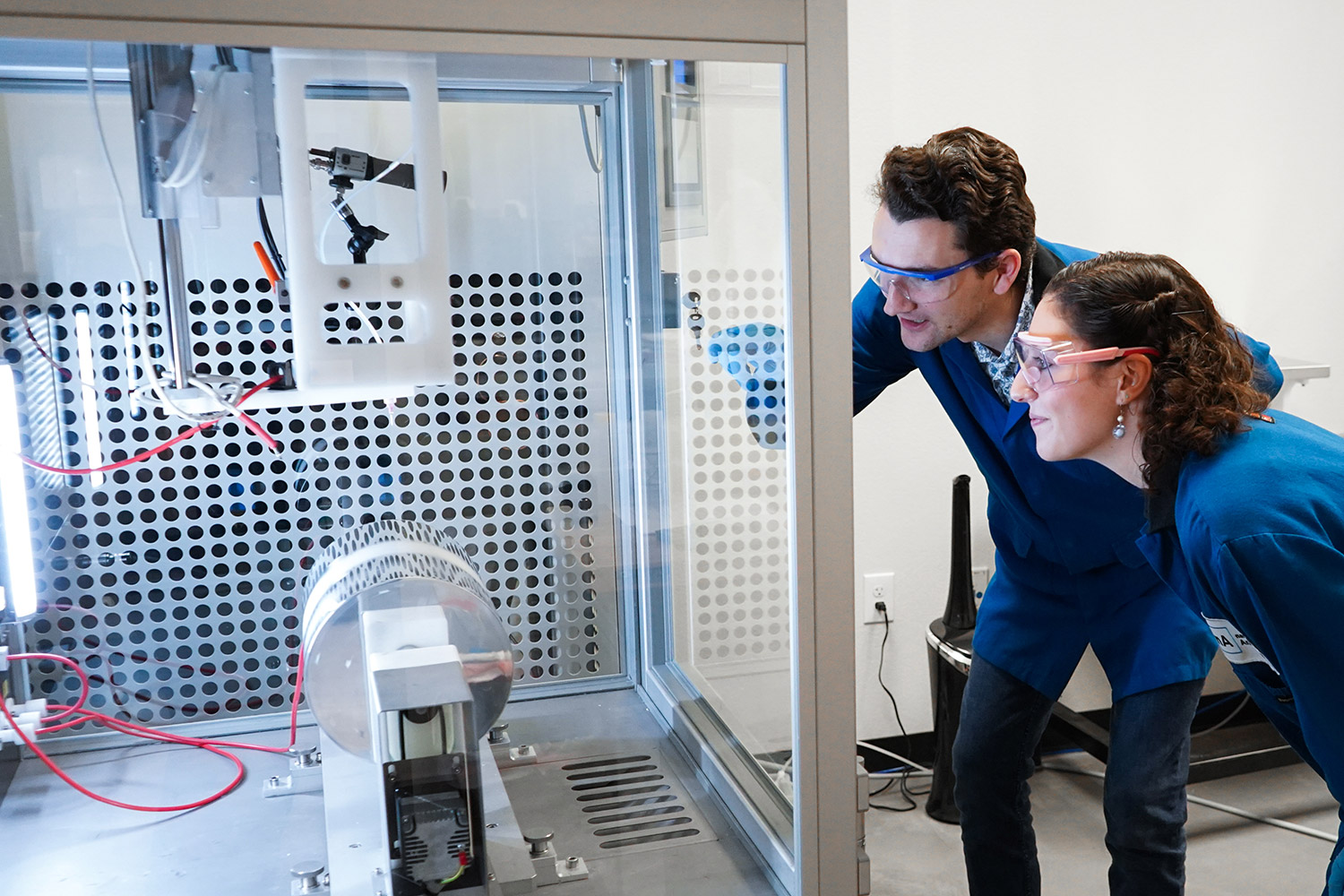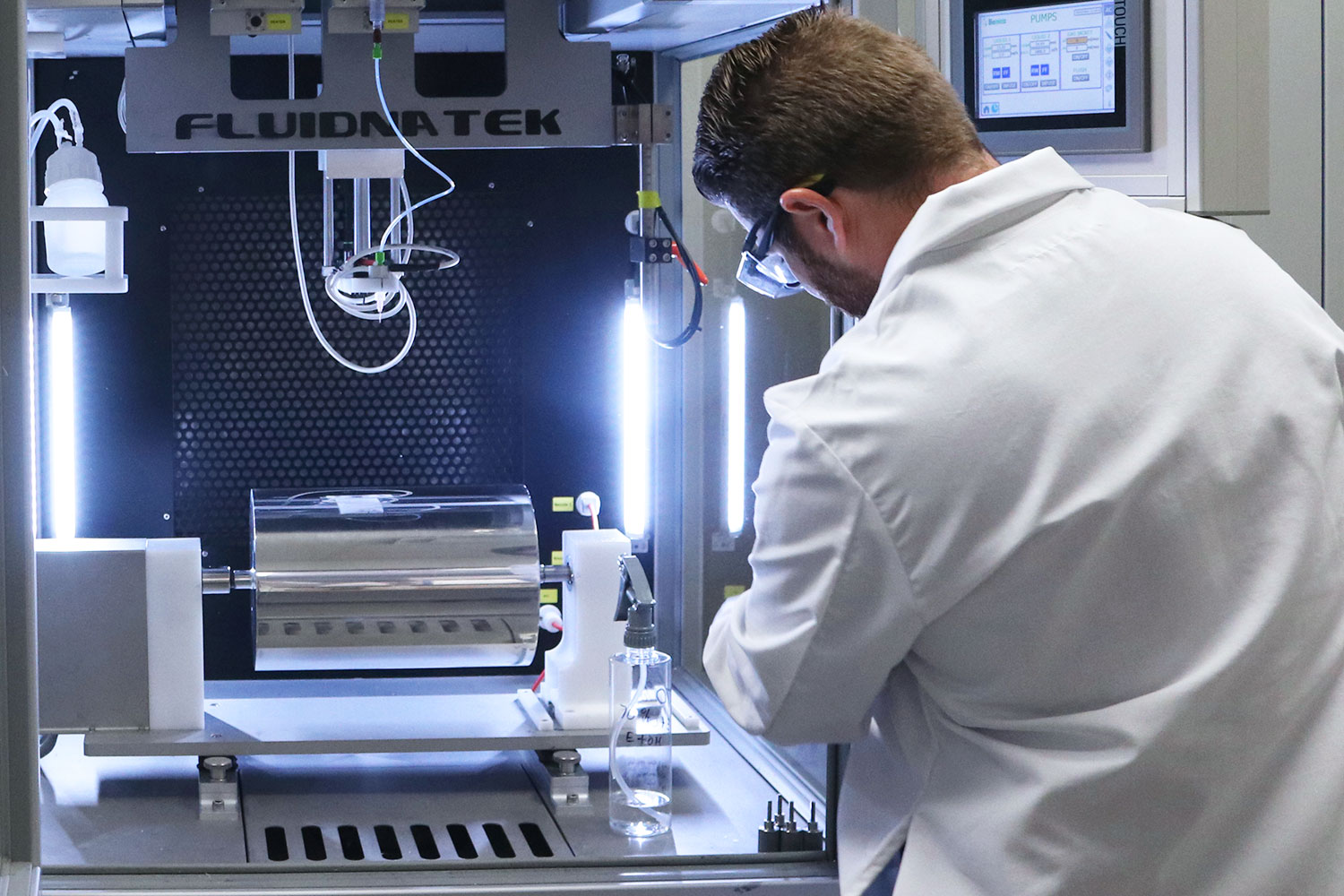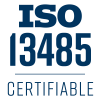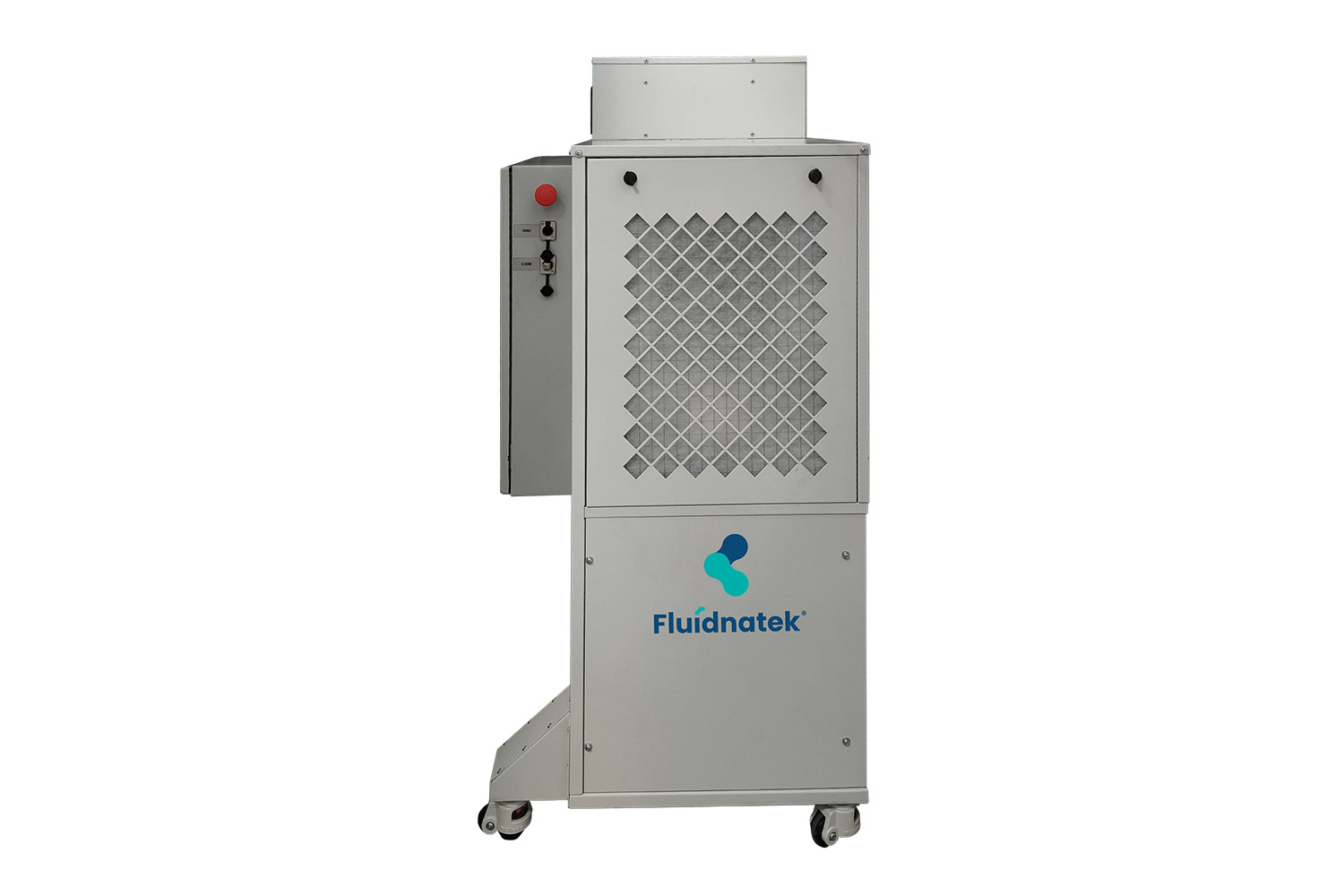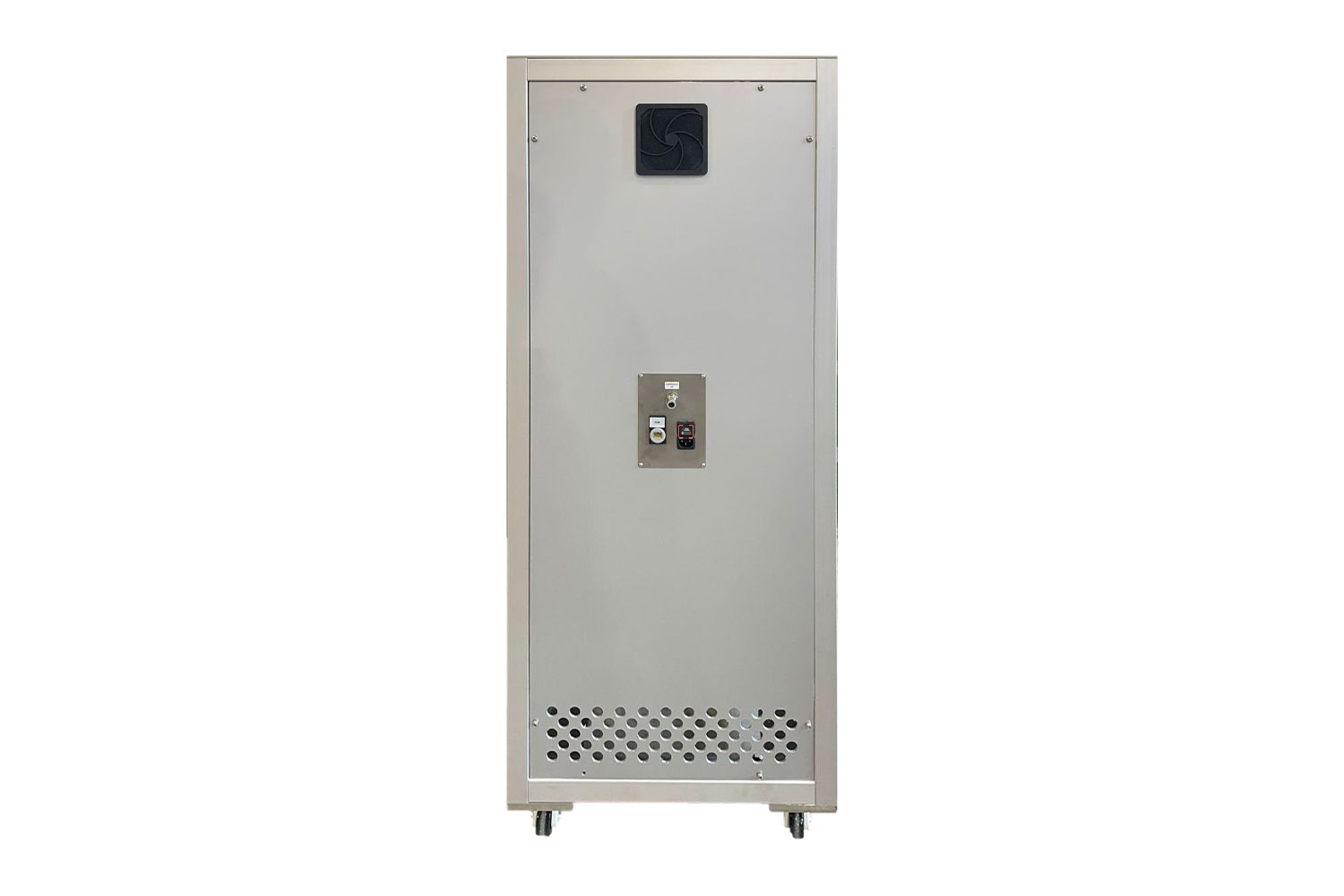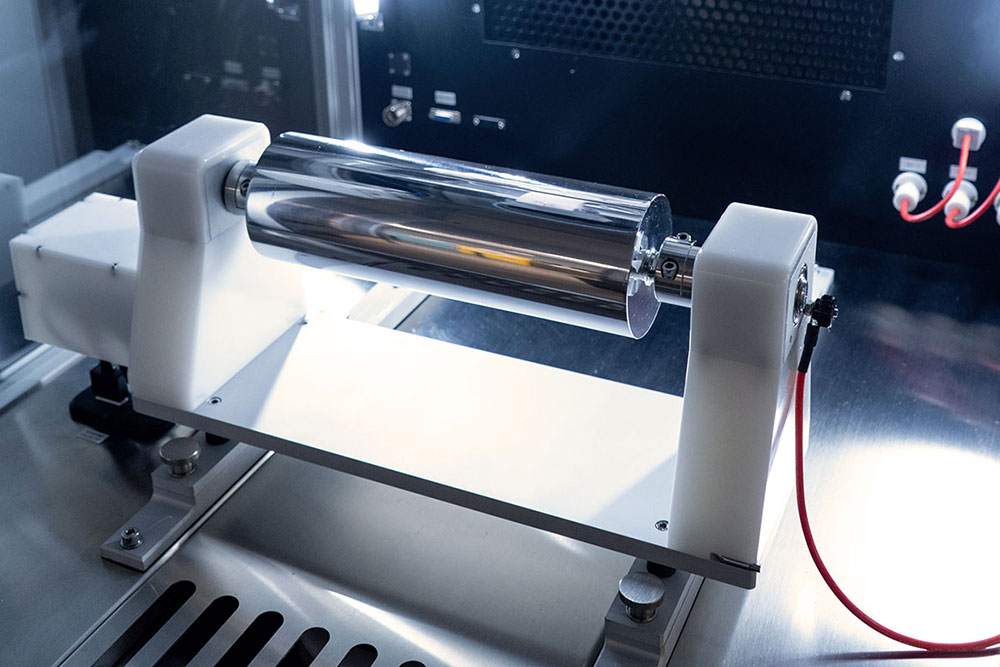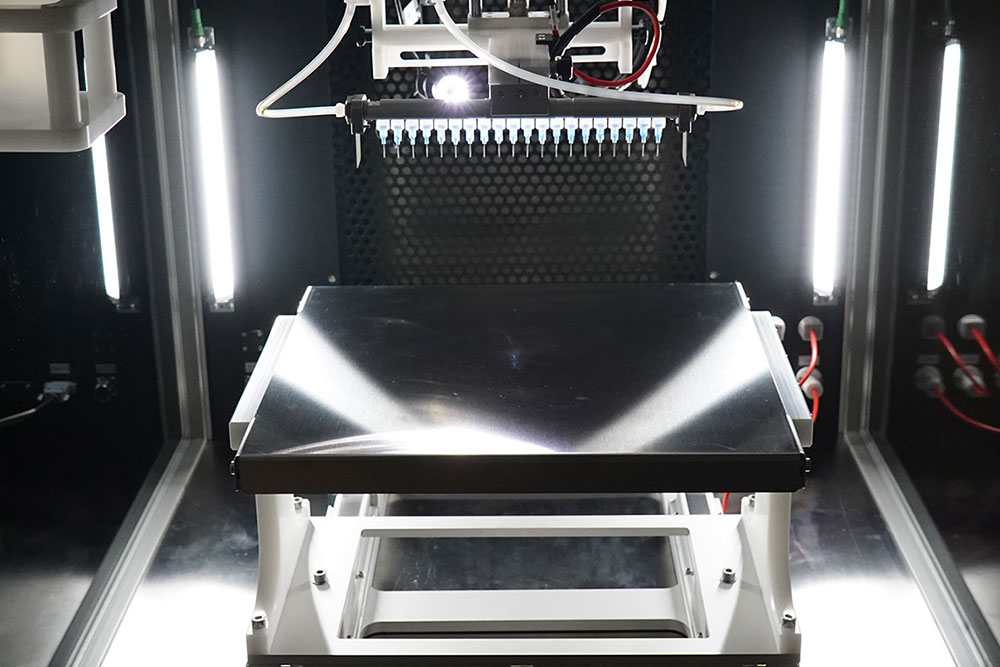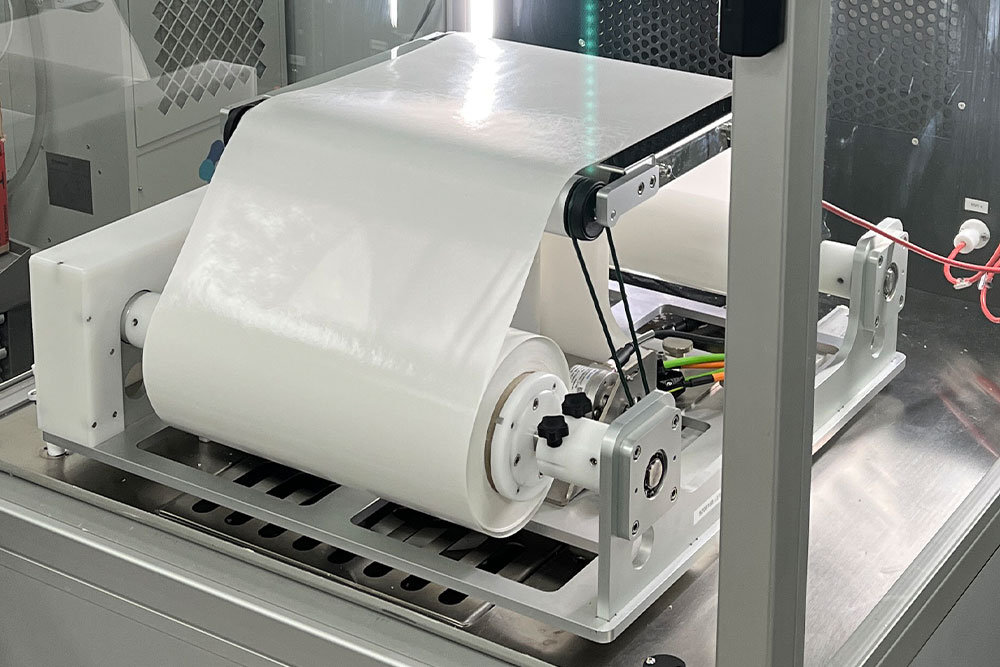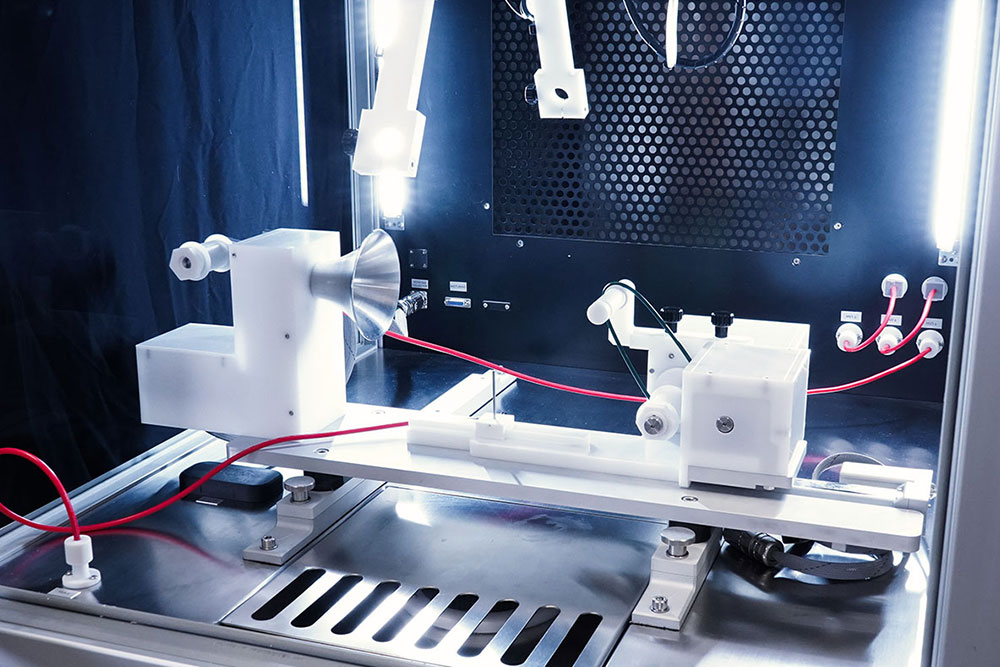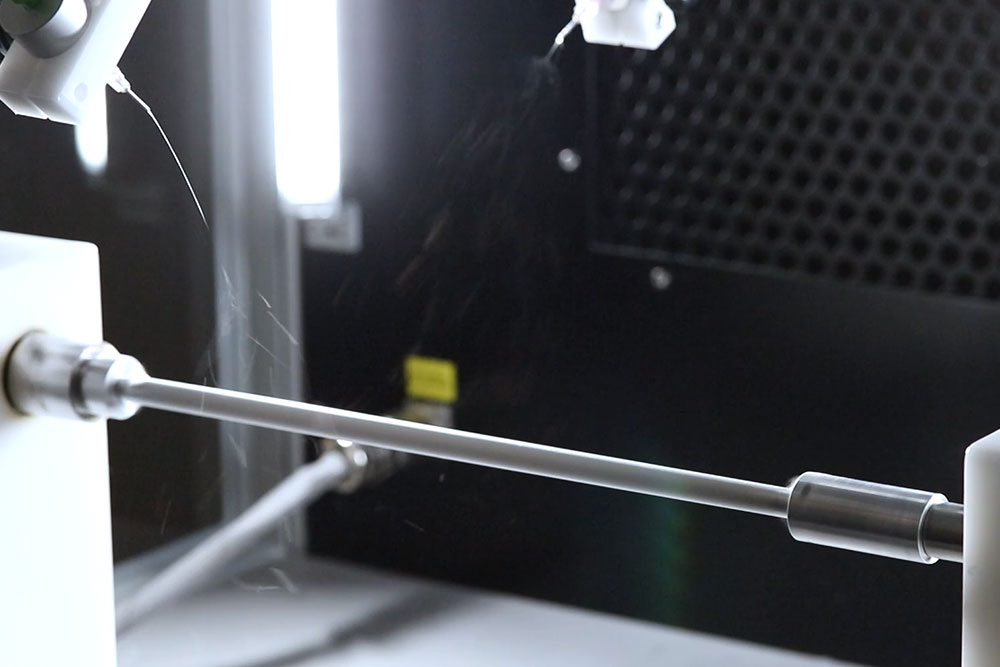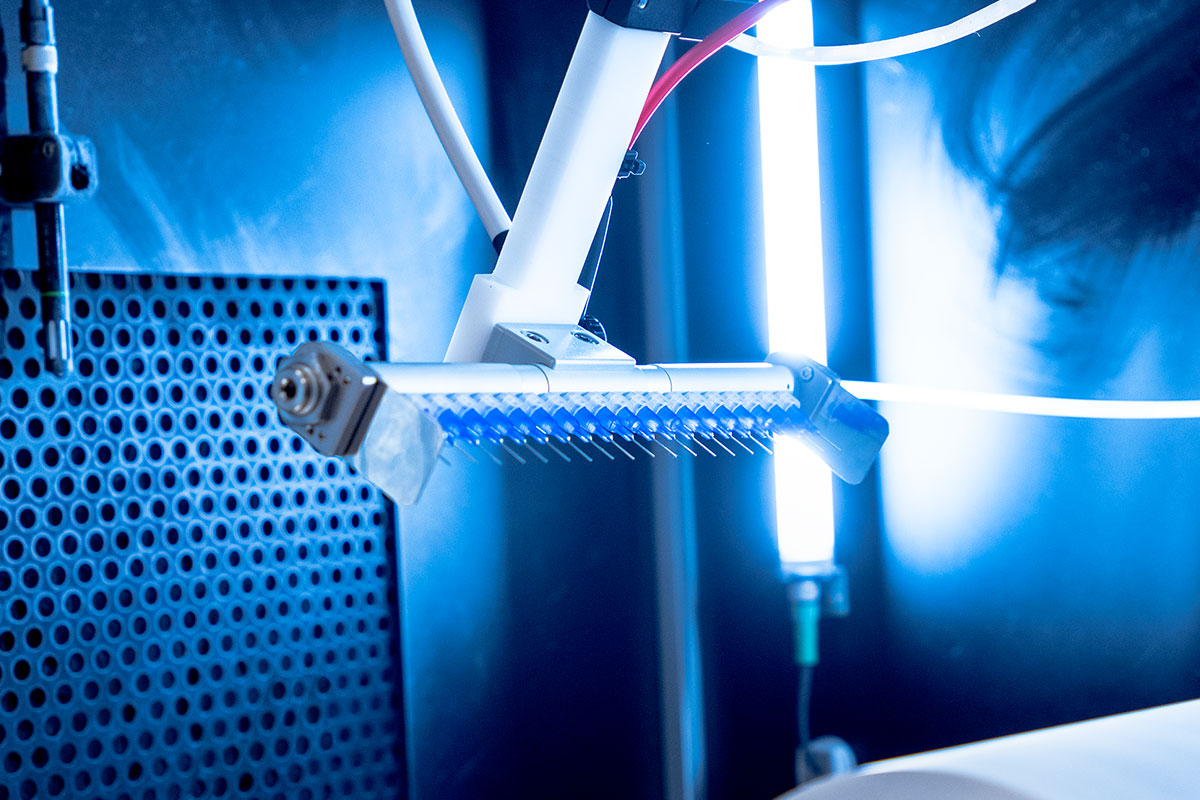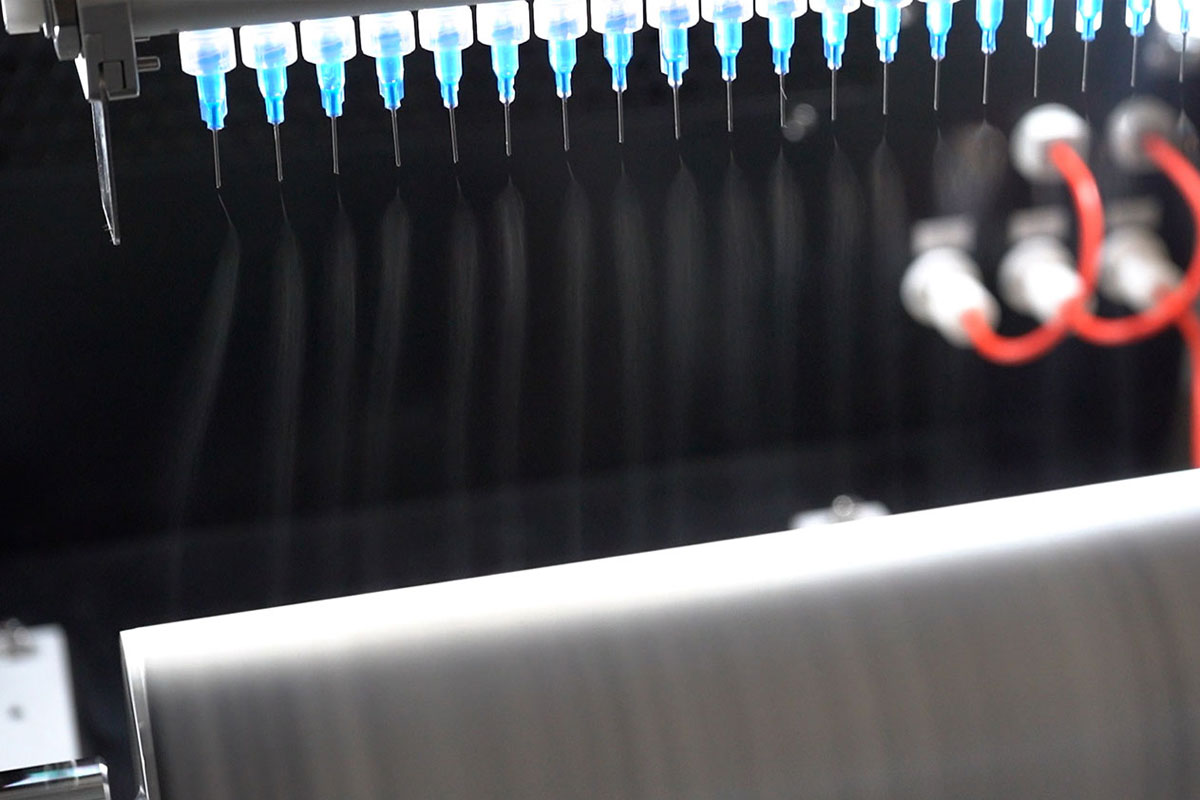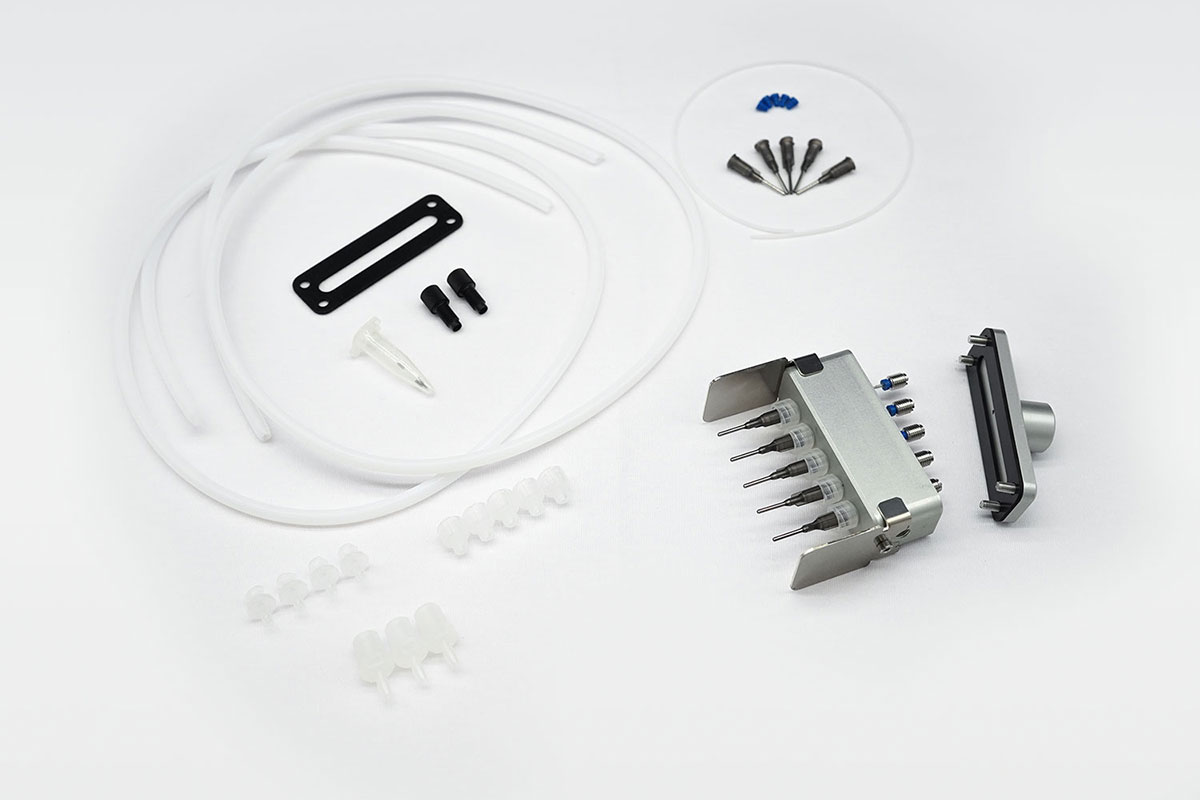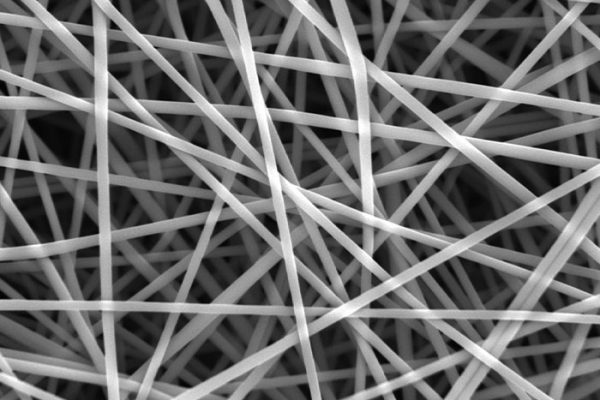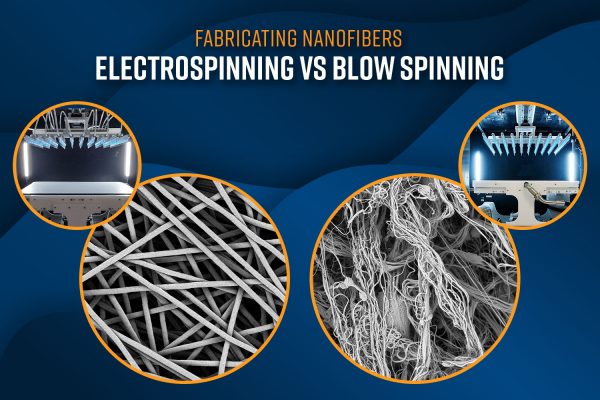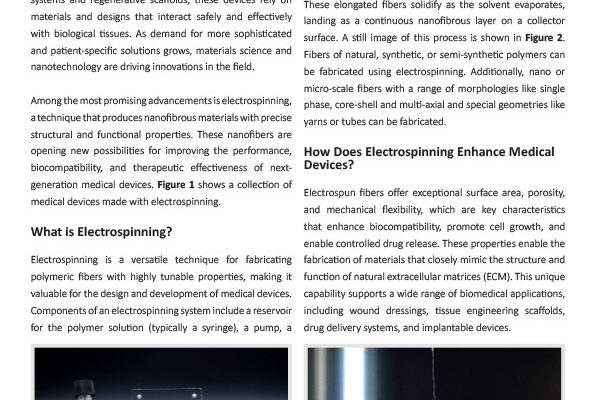Electrospinning & Electrospraying System
Fluidnatek® LE-100
The LE-100 is a modular electrospinning system enabling quick, reproducible nanofiber production from prototyping to small-scale manufacturing. Ideal for advanced development projects requiring maximum experimental capabilities, process control, and larger samples, it integrates high-voltage power supplies, advanced spinnerets, fluid handling components, and rotating or flat collectors.
Advanced Sample Development
Use 8+ emitters and collectors for electrospinning, electrospraying, or combined techniques
cGMP Certifiable
Electrospinning and electrospraying for pharma and biomedical use, with cGMP validation via IQ/OQ/PQ documentation
Needle-based and Needle-less
Develop samples with needle-based, needle-less, or both emitters simultaneously for versatile applications
Full Environmental Control
HEPA-filtered unit controls temperature (18 – 45 °C), relative humidity (10 – 80%), and airflow (90 – 180 m3/h)
Explore electrospinning for your application!
Our contract research team offers you access to latest in electrospinning, ideal for initial consultations, proof-of-concept experiments, feasibility studies, method development, and early-stage R&D.
Advanced Electrospinning System for GMP-Compliant Biomedical Production
The Fluidnatek LE-100 is the ultimate solution for GMP-compliant production of high-value particles and 3D-based samples, catering to the advanced needs of the biomedical, energy, and pharmaceutical industries. Designed for scientists and engineers engaged in cutting-edge development projects, it offers maximum experimental flexibility, tighter process control, and larger sample sizes when compared to benchtop units. Ideal for applications like beta-releases and pre-market introductions, the LE-100 ensures consistency and reproducibility with control of over 20 processing parameters. Operating under clean ISO-7/Class 10,000 conditions, this versatile unit integrates advanced features such as multiple emitters and collectors, precise environmental control, bipolar membranes, roll-to-roll, and scalability with up to 40 needles or needle-less processes within the same machine. Its cGMP certifiability makes it the preferred choice for innovative product development in highly regulated industries.
Application Areas:
Fluidnatek LE-100
Product Features
Needle-Based and Needle-less Processing
Users can employ needle-based or needle-less emitters (or both simultaneously), enabling unparalleled versatility for electrospinning and electrospraying projects. The LE-100 supports single-phase, coaxial, and triaxial configurations, allowing advanced fiber and particle structures to be created. The system accommodates emitters designed for low-viscosity solutions as well as high-viscosity and gas-assisted setups, ensuring compatibility with a wide range of material formulations, allowing the design of virtually any product requiring electrospinning or electrospraying.
Advanced Safety Features
The LE-100 is equipped with safety interlocks, continuous and actively regulated exhaust systems to manage solvent vapors, and earthed frames to prevent static charge buildup. Access doors include safety shut-off switches to protect users from high-voltage risks during operation while ventilation is ramped up to prevent solvent vapor exposure with harmful solvents when in use. A color-changing warning beacon provides clear visual indicators of machine status and high-voltage activity, ensuring users are always aware of potentially hazardous conditions. An arc detector protects the instrument’s sensitive hardware from voltage fluctuations.
Comprehensive Environmental Control
The LE-100 offers precise control of temperature (18 – 45 °C), relative humidity (10 – 80%), and airflow (90 – 180 m³/h) using an optional HEPA-filtered system, ensuring reproducible conditions for biomedical and pharmaceutical applications, as well as other areas where tight environmental conditions are needed for production. The system, when equipped with an ECU, regulates absolute humidity, maintaining consistent drying capacity to achieve ideal conditions for sensitive material processing.
Process Validation
The LE-100 can be provided with qualification documentation to support validation compliance, including Factory Acceptance Testing (FAT), Site Acceptance Testing (SAT), Installation Qualification (IQ), and Operational Qualification (OQ). These documents facilitate process validation and comply with standards such as Good Manufacturing Processes (GMP), Good Laboratory Practices (GLP), and Good Automated Manufacturing Practices (GAMP), meeting Food and Drug Administration (FDA) and International Organization for Standardization (ISO) requirements.
Versatile Emitter and Collector Options
The LE-100 supports more than six collector types, including flat plates, rotating drums, mandrels, and roll-to-roll systems, providing flexibility for diverse applications. It also accommodates fourteen emitter types, ranging from single-phase and coaxial to triaxial and needle-less configurations. These options enable advanced processes such as blow-spinning, gas-assisted electrospinning, and multi-material co-spinning, catering to complex research and production needs.
Fluidnatek LE-100
Product Accessories
Environmental Control Unit (ECU)
The Environmental Control Unit add-on provides precise regulation of temperature (18 – 45 °C) and relative humidity (10 – 80% RH), ensuring optimal conditions for electrospinning and electrospraying processes. The HEPA filtration system maintains a clean processing environment, meeting standards suitable for biomedical and pharmaceutical applications. Additionally, the actively regulated exhaust system effectively removes solvent vapors and stabilizes airflow (90 – 180 m³/h), ensuring consistent fiber and particle morphology, even for materials highly sensitive to environmental fluctuations. The ECU is the ultimate accessory for batch-to-batch consistency all year round.
Dry Heating Unit (DHU)
The optional Dry Heating Unit (DHU) offers precise control over temperature and humidity within the processing chamber. It increases air temperature from ambient to 45°C and reduces relative humidity to as low as 1%, depending on room conditions. This accessory is especially beneficial for solutions requiring low humidity and elevated temperatures to achieve optimal fiber and particle morphology. The DHU works in conjunction with the actively regulated exhaust system, which prevents solvent vapor accumulation, ensures consistent air exchange, and maintains slightly negative pressure in the chamber for safe operation.
High Definition Process Data Hub
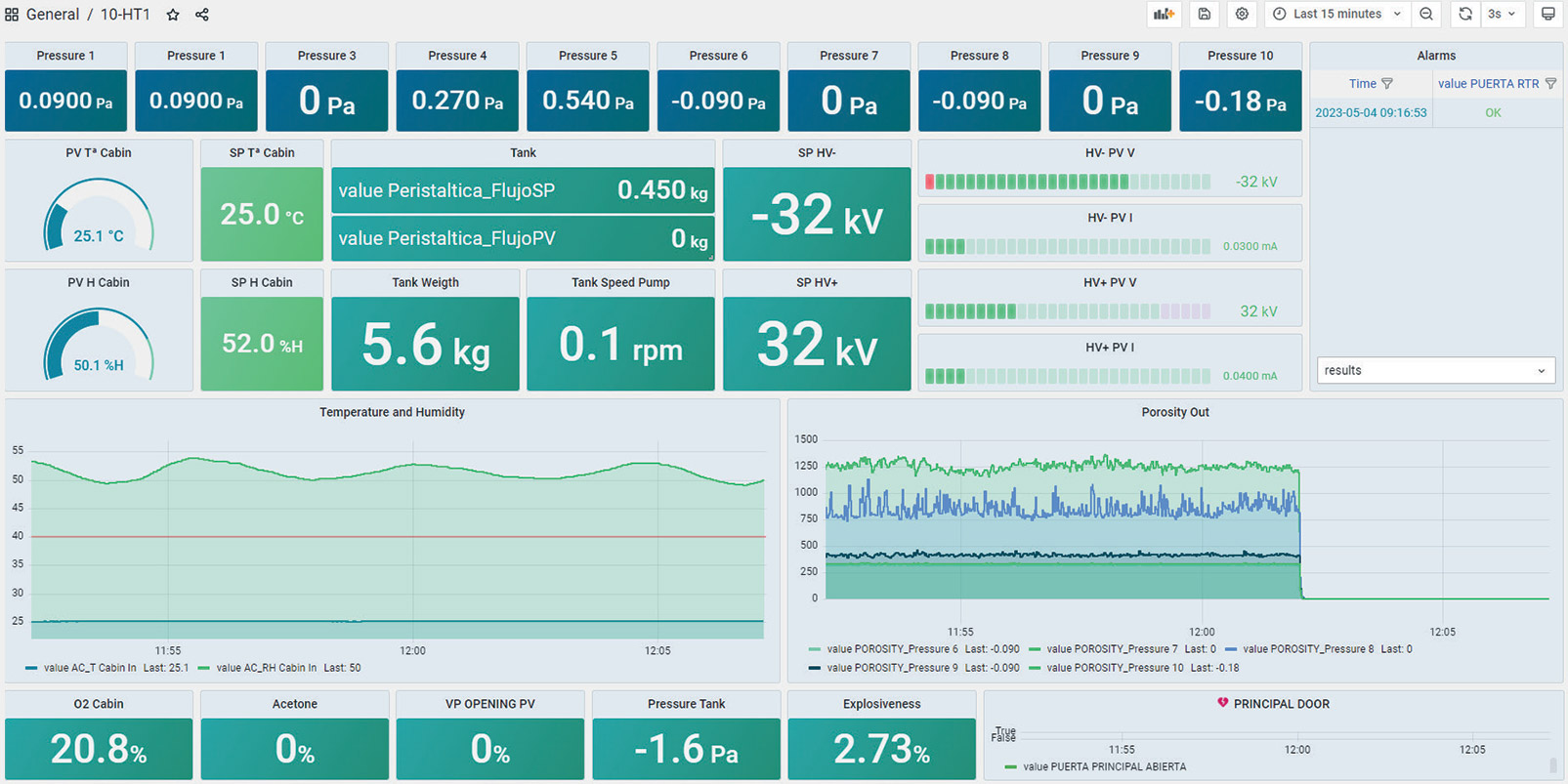
Collector Variety
The system includes flat plate collectors as standard and offers optional upgrades to rotating drums, mandrels, disks, and roll-to-roll collectors. These options facilitate the production of aligned fibers, tubular structures, and large-area nanofiber sheets.
Syringe Pump Options
The LE-100 supports various syringe pump types, including single-channel and twin-channel. They can be used in single-phase, coaxial, and triaxial configurations. These pumps accommodate batch volumes ranging from 1 mL to 560 mL, providing flexibility for diverse experimental setups. Linear forces up to 330 N allow users to operate with high-viscosity solutions for the most challenging applications.
High-Voltage Power Supplies
The LE-100 is equipped with a positive high-voltage power supply (0 to +30 kV) and can be upgraded to include negative (0 to -30 kV) or bipolar (-30 to +30 kV) supplies in four different locations. These configurations enhance process flexibility for complex material deposition, including proper sample adhesion when coating different samples or substrates. They also allow for the reorganization of functional groups in the material at the molecular level, enabling the processibility of solutions that exhibit longer jets.
Advanced Emitter Options
Optional linear multi-emitter spinning heads, available in single-phase or coaxial configurations, enable high-throughput production. Field deflectors can be added to improve deposition uniformity across wide collectors.
Motion and Positioning Controls
Automated X, Y, and Z-axis motion systems allow precise control over emitter positioning and distance. These features improve sample consistency and enable the production of uniform coatings or complex structures. Samples can be easily coated on specific areas by fully controlling each axis on the touch screen panel
Process Optimization Tools
Accessories such as a solvent-gas jacket system, gas-assisted electrospinning modules, and Taylor cone visualization systems enhance process stability, especially when working with volatile or high-viscosity solutions.
Additionally, the in-line area density metrology system provides real-time measurement and monitoring of deposition uniformity during roll-to-roll processing. To further enhance process control, Industry 4.0-oriented software features enable continuous real-time monitoring of all machine parameters, with updates every second. These capabilities allow users to remotely visualize the machine’s operation and conduct in-depth analyses of each batch, facilitating improved traceability and reproducibility.
For added standardization, a batch ID feature can be implemented to streamline process documentation. Furthermore, an optional Audit Trail upgrade logs all events occurring during machine operation, providing a comprehensive record that supports quality assurance and compliance requirements.
Software and Data Management
The LE-100 offers advanced software capabilities, including multi-user access, recipe management, data logging, and batch control. Optional upgrades, such as the High-Definition Process Data Hub, allow real-time monitoring of over 20 parameters.
Fluidnatek LE-100
Electrospinning & Electrospraying Applications
Biomedical & Tissue Engineering
Electrospun nanofibers are used to create scaffolds for tissue engineering applications. These scaffolds mimic the extracellular matrix, providing a supportive environment for cell growth and tissue regeneration. They are prevalent in wound healing, bone regeneration, nerve regeneration, and more.
Medical Devices
Whether as coatings for prefabricated structures, active ingredient additives, or total device fabrication, medical devices implement electrospun nanofibers and particles for enhanced therapeutic effectiveness. These fibers and particles can allow for improved performance in mechanical properties, biological microenvironment control, cellular integration, and many more application-specific advantages.
Drug Delivery
Electrospun fibers and/or particles can be loaded with drugs or therapeutic agents and used as drug delivery systems. Precisely controlled electrospinning parameters allow the high surface area-to-volume ratio and tunable properties of nanomaterials providing controlled release of drugs, making them suitable for targeted and sustained drug delivery.
Functional & Bio Textiles
The enhanced performance of textiles by imparting properties such as water resistance, flame retardancy, and antimicrobial activity can be accomplished using electrospun materials. These fibers are used in lightweight protective clothing, wound dressings, and specialty textiles for various applications.
Filtration & Separation
Nanofibrous membranes produced by electrospinning are employed in filtration and separation processes due to their small pore size and high porosity. They are used in air filtration, water filtration, oil-water separation, and other environmental applications. This can be done using high-throughput electrospinning methods, such as needle-less electrospinning.
Batteries & Fuel Cells
Energy storage and conversion devices such as batteries, supercapacitors, and fuel cells utilize electrospun nanofibrous materials for improved performance of these devices due to their high surface area and electrical conductivity. Ease of particle incorporation, such as ceramic/inorganic nanoparticles, and homogeneity in electrospinning promotes the efficiency of the fibrous materials electroconductivity.
Cosmetics
Electrospun nanofibers can be used as carriers for active cosmetic ingredients such as vitamins, antioxidants, peptides, plant extracts, and more to provide targeted treatment for things like anti-aging, anti-scarring, UV protection, or moisturizing. These nanofibers provide a large surface area and controlled release properties, ensuring better penetration into the desired area and enhanced efficacy of the active ingredients.
Environmental Remediation
Electrospun nanofibrous materials are employed in environmental remediation applications such as wastewater treatment, oil spill cleanup, and air pollution control. They can effectively remove pollutants and contaminants from the environment due to their high surface area and adsorption capacity.
Food Packaging
Electrospinning in food packaging involves utilizing nanofibers and incorporated particles to create innovative packaging materials with enhanced barrier properties against oxygen, moisture, and microbes, extending the shelf life and freshness of food products. These nanofibrous packaging materials offer a sustainable and environmentally friendly alternative to traditional packaging materials, contributing to the reduction of food waste and environmental impact in the food industry.
Fluidnatek LE-100
Product Knowledgebase
Webinar
From Bench to Brain: Translating Nanofiber Drug Delivery for Glioblastoma Therapy
Glioblastoma (GBM) remains a highly aggressive brain cancer with poor prognosis, in part d…
Blog
Fabricating Nanofibers: Electrospinning Vs Blow Spinning
Nanofibers, with their high surface area-to-volume ratio, tunable porosity, and mechanical…
White Paper
Enhancing Medical Device Performance Through Electrospinning
Medical devices play a crucial role in modern healthcare, enabling diagnosis, treatment, a…

